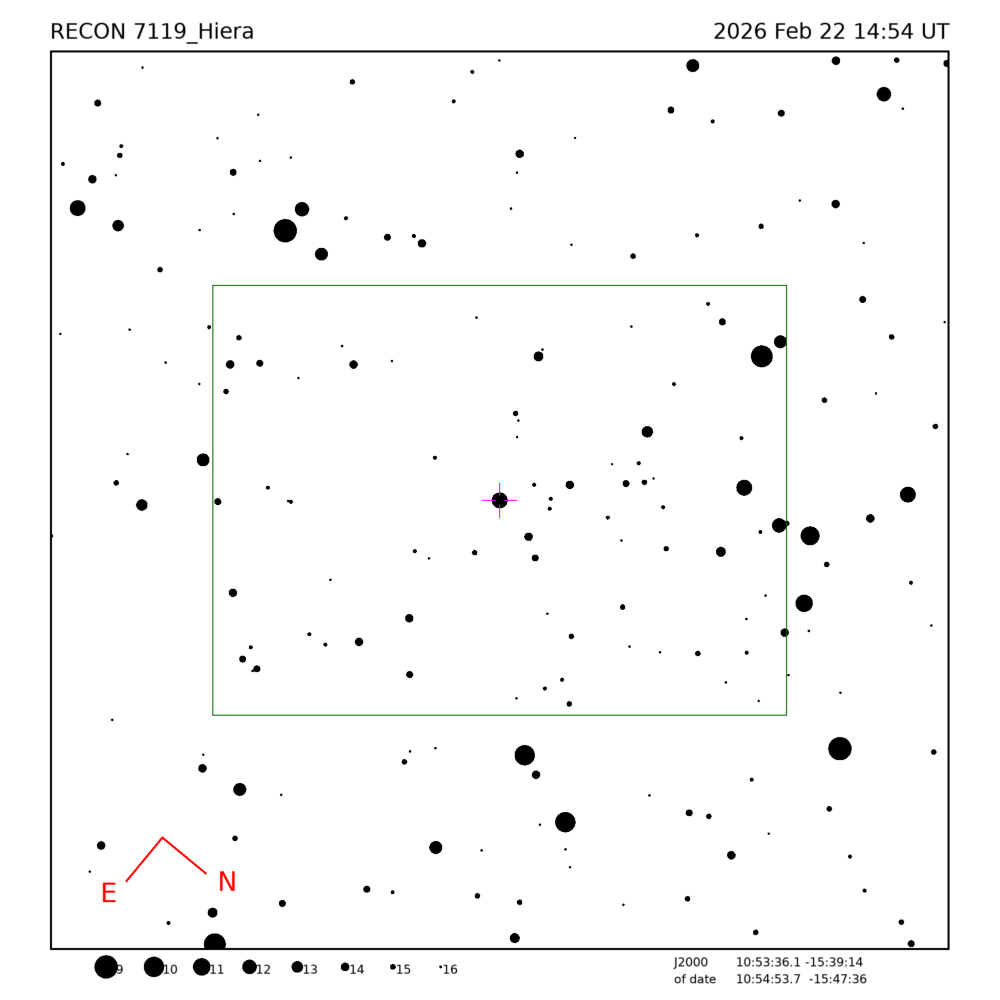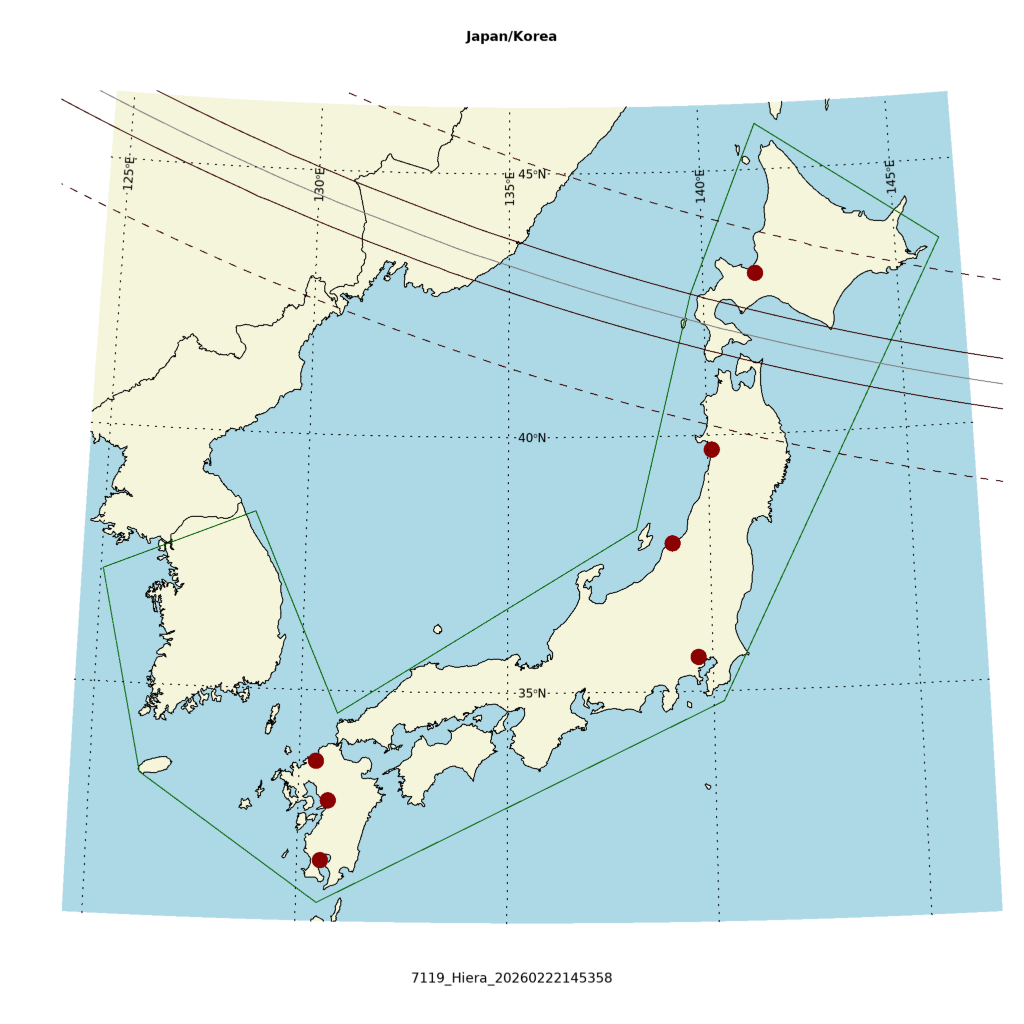
Occultation event with (7119) Hiera, event index number 3289
Regions able to see the event: Japan
Geocentric closest approach at 2026/02/22 14:53:58 UTC
J2000 position of star is 10:53:36.1 -15:39:14
Equinox of date position of star is 10:54:53.7 -15:47:36
Star is 131 degrees from the moon. Moon is 29% illuminated.
Stellar brightness G=11.7, apparent brightess of occulting body is G=14.9
Use an exposure time of 0.12 seconds with the standard RECON-QHY system.
SNR of 25.1 per integration for unocculted signal
Expected flux drop is 95% with SNR of 23.8 for the occulted depth (per occulted point)
Apparent velocity is 17.0 km/sec on the sky relative to the star, or, 19.0 arcsec/hr.
Position angle of asteroid motion is 97.2 degrees
The recommended exposure time corresponds to 2.0 km per image.
The 1-sigma error in the time of the event is 1.4 seconds.
The 1-sigma cross-track error in the shadow position is 29.5 km.
The sky-plane scale is 3220.0 km/arcsec.
Diameter estimates:
66.4 km assuming a 5% albedo, maximum of 3.9 sec for a central chord
27.1 km assuming a 30% albedo, maximum of 1.6 sec for a central chord
Cross-track diameter of 59.2 km used for deployment plan.
Star training set for 7119_Hiera, (2026/02/22 14:54UT) Object RA Dec mag sep mel Regulus 10:09:45.7 +11:50:18 1.3 29.80 111 4Gam Crv 12:17:09.3 -17:41:13 2.6 19.77 150 PPM 223610 10:54:50.7 -15:35:09 6.3 0.21 131 PPM 223608 10:54:44.6 -15:57:36 8.3 0.17 131 PPM 223598 10:54:19.4 -15:44:19 9.5 0.15 131 7119_Hiera 10:54:53.7 -15:47:36 14.9 131 Positions are for equinox of date

This table contains the target star visibility for registered Japan sites that are relevant for this occultation. This list has been filtered to only those sites that can see the field and are within range of the shadow given the uncertainties. The observing time range has been calculated to cover the time of the event at each site with allowances for the event timing uncertainty plus time for obtaining a pre and post event baseline lightcurve. This set of stations has a 5.8 % chance of getting at least one chord. There is a 0.0% chance of 2 or more chords assuming clear weather for all.
| Site Name | Site mid-time (UT) |
Sun alt (deg) |
Sky | Moon | Star alt (deg) |
Star az (deg) |
Target | Observing Time | Xtrack (km) |
Prob |
|---|---|---|---|---|---|---|---|---|---|---|
| Sapporo | 14:55:11 | -56.9 | Dark | Down | 31.0 | 173.6 | Up | 14:52:11-14:58:11 | 71.4 | 0.058 | Akita | 14:55:17 | -60.3 | Dark | Down | 34.2 | 171.9 | Up | 14:52:22-14:58:22 | -148.2 | 0.000 |

Star training set for 7119_Hiera, (2026/02/22 14:54UT) Object RA Dec mag sep mel Regulus 10:08:21.9 +11:58:02 1.3 29.80 111 4Gam Crv 12:15:48.1 -17:32:30 2.6 19.77 150 PPM 223610 10:53:33.0 -15:26:46 6.3 0.21 131 PPM 223608 10:53:27.0 -15:49:13 8.3 0.17 131 PPM 223598 10:53:01.8 -15:35:57 9.5 0.15 131 7119_Hiera 10:53:36.1 -15:39:14 14.9 131 Positions are for J2000